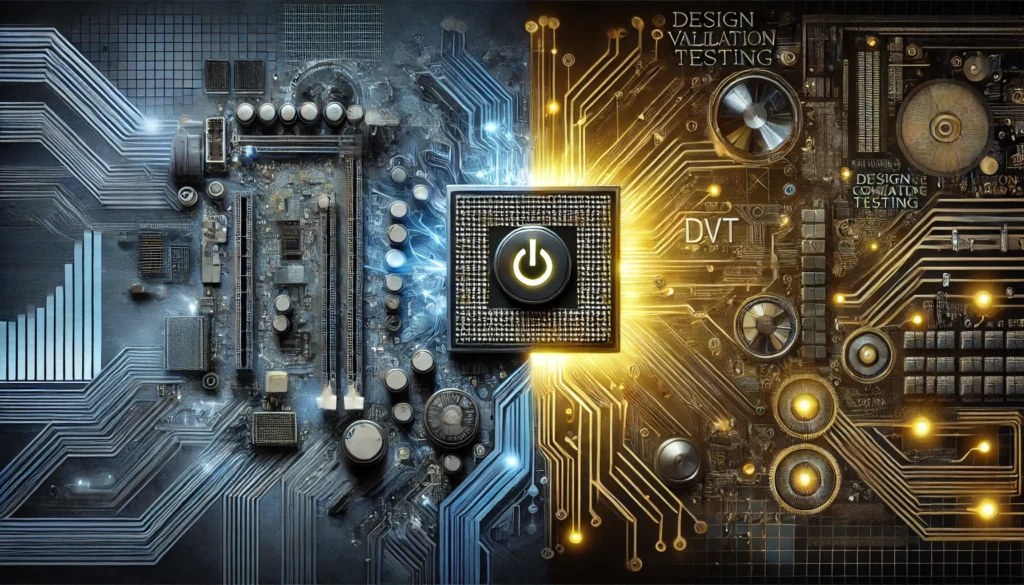In the world of hardware and software development, knowing the different phases of the process is essential to ensure that the final product meets quality and performance standards. Among these phases, the terms bring up and DVT (Design Validation Testing) stand out as key moments that often cause confusion. In this article, we’ll explore what each term means, the differences between them, and why they are so important for a project’s success.

What is Bring Up?
Bring up is the initial phase of a project, where the main focus is on powering up and configuring the system for the very first time. During this stage, engineers perform several critical activities, such as:
- Initial Configuration: Verifying that all components are correctly installed and interconnected.
- Hardware Activation: Powering on the system and ensuring that the electrical signals and communications between devices are functioning properly.
- Identifying Basic Issues: Diagnosing early-stage errors that could compromise system operation, such as connection problems or power supply issues.
This phase is comparable to the “first day of school” for a new system—it’s when everything must work correctly so that the next steps can be taken with confidence. Once the bring up phase is successfully completed, the development team can be sure that the system’s foundation is solid and ready for more in-depth testing.
Understanding DVT (Design Validation Testing)
After bring up, the project moves into a more rigorous testing phase known as DVT (Design Validation Testing). In this stage, the focus is on validating the complete design of the system to ensure it meets all specified requirements. Key aspects of DVT include:
- Extensive Testing: Conducting a series of tests that cover everything from performance to system reliability.
- Performance Validation: A detailed analysis to verify that the product meets the required speed, stability, and efficiency parameters.
- Compliance with Standards: Certifying that the design adheres to the technical and regulatory standards necessary for mass production.
DVT can be seen as a “final review,” where the design is subjected to rigorous conditions that simulate the real operational environment. This process is crucial for identifying any potential improvements or adjustments that need to be made before the product’s launch.
Key Differences Between Bring Up and DVT
While both terms are related to development, they have different objectives and approaches:
- Project Phase:
- Bring Up: This is the initial stage where the system is configured and tested at a basic level.
- DVT: Occurring later, this phase focuses on comprehensive testing and full design validation.
- Objectives:
- Bring Up: Ensures that all components are functioning correctly and that the system is operational.
- DVT: Verifies compliance with specifications, performance standards, and the overall robustness of the design.
- Complexity of Tests:
- Bring Up: Involves simple tests focused on the basic operation of the system.
- DVT: Involves complex tests that cover diverse scenarios and extreme operating conditions.
Understanding this distinction is critical—while bring up establishes the viability of a project, DVT ensures the quality and reliability needed for a successful final product.
Why These Stages Matter
1. Risk Reduction
Implementing testing from the early stages helps identify and correct issues before they become major problems. This approach minimizes the risk of critical failures that could jeopardize the system’s integrity.
2. Time and Resource Savings
Detecting issues early during the bring up phase and validating the design through DVT prevents costly rework and production delays, leading to a more efficient development process.
3. Quality Assurance
By subjecting the system to rigorous testing, engineering teams can confirm that the product not only functions but also performs reliably and consistently under various operating conditions.
4. Preparation for Mass Production
DVT, in particular, is essential to ensure that the final design is ready for large-scale manufacturing and complies with market and regulatory requirements.
Conclusion
Understanding the difference between bring up and DVT is vital for anyone involved in hardware and software development. While bring up marks the beginning of the journey by ensuring that the system is operational, DVT serves as a strict quality control stage, validating that every detail of the design meets market expectations and regulatory standards.
Adopting these practices not only improves product quality but also contributes to a more organized and efficient development process. Whether you’re working in the industry or just starting out, remember that investing time in these stages can make all the difference in the success of your final product.
We hope this article has clarified the main differences between bring up and DVT and provided valuable insights you can apply to your projects. If you have any questions or experiences to share, feel free to leave a comment below!






Terrific post however , I was wondering if you could write a litte more on this topic? I’d be very thankful if you could elaborate a little bit more. Many thanks!